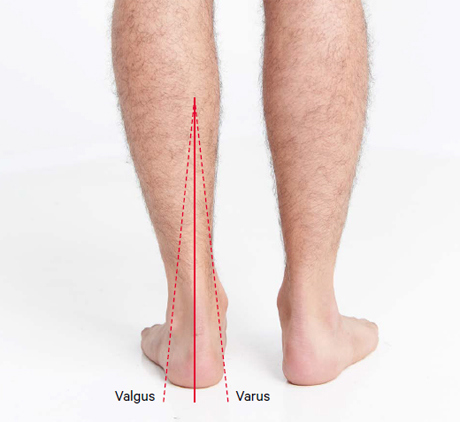Examination of the foot and ankle video
Watch now
A short video demonstrating how to examine the joints of the foot and ankle.
Look
With the patient sitting on the couch, their feet overhanging the end of it:
- Observe the feet, comparing one with the other for symmetry.
- Look specifically at the forefoot for nail changes or skin rashes, such as psoriasis.
- Look for alignment of the toes, evidence of hallux valgus of the big toe or subluxation (partial dislocation) of the joints.
- Look for clawing of the toes, joint swelling and callus formation which typically occurs over the metatarsophalangeal joints on the plantar aspect and over the dorsum and/or apex of the toes.
- Look at the underside or plantar surface for callus formation.
- Look at the patient’s footwear. Check for abnormal or asymmetrical wearing of the sole or upper, for evidence of poor fit or the presence of special insoles.
With the patient weight-bearing:
- Look again at the forefoot for toe alignment and whether they are in contact with the ground.
- Look at the midfoot for foot arch position (a low arch profile in a patient with normal joint movement should resolve when standing on tip toes).
- From behind, look at the hindfoot for Achilles tendon thickening or swelling.
- Look for normal alignment of the hindfoot (see image below). Disease of the ankle or subtalar joint may lead to a varus or valgus deformity.

Feel
- Assess the temperature over the forefoot, midfoot and ankle.
- Check for the presence of a peripheral pulse palpating the dorsalis pedis on the dorsum of the foot.
- Gently squeeze across the MTP joints, watching the patient’s face for signs of pain or discomfort.
- Palpate the midfoot, the ankle and subtalar joints for tenderness.
Move
- Assess, both actively and passively, movements of inversion and eversion at the subtalar joint, plus dorsi- and plantar flexion at the big toe and ankle joint checking for any restrictions and/or crepitus.
- Movement of the mid-tarsal joints can also be performed by fixing the heel with one hand and, with the other hand, passively inverting and everting the forefoot.
Function
- If not already done, assess the patient’s gait, watching for the normal cycle of heel strike, stance, and toe-off, speed of walking and turning.